Rear Brake Caliper Replacement 1500 Series
Caution: Refer to Brake Dust Caution in the Preface section.
Caution: Refer to Brake Fluid Irritant Caution in the Preface section.
Removal Procedure
- Inspect the fluid level in the brake master cylinder reservoir.
- If the brake fluid level is midway between the maximum-full point and the minimum allowable level, no brake fluid needs to be removed from the reservoir before proceeding.
- If the brake fluid level is higher than midway between the maximum-full point and the minimum allowable level, remove brake fluid to the midway point before proceeding.
- Raise and support the vehicle. Refer to Lifting and Jacking the Vehicle in General Information.
- Remove the tire and wheel assembly. Refer to Tire and Wheel Removal and Installation in Tires and Wheels.
- Install a C-clamp over the body of the brake caliper, with the C-clamp ends against the rear of the caliper body and the outboard disc brake pad.
- Slowly tighten the C-clamp until the pistons are pushed into the caliper bores enough to remove the caliper from the pads.
- Remove the C-clamp from the caliper.
- Clean all dirt and foreign material from the brake hose end.
- Remove the brake hose to caliper bolt from the brake caliper.
- Remove the brake hose from the caliper.
- Remove and discard the 2 copper brake hose gaskets. These gaskets may be stuck to the brake caliper housing or the brake hose end.
- Remove the caliper guide pin bolts.
- Remove the brake caliper from the vehicle.
- Inspect the caliper assembly. Refer to Brake Caliper Inspection .
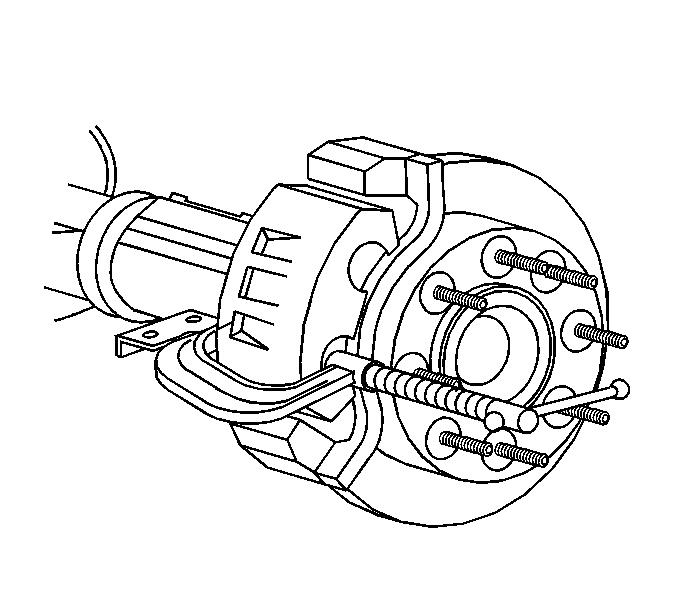
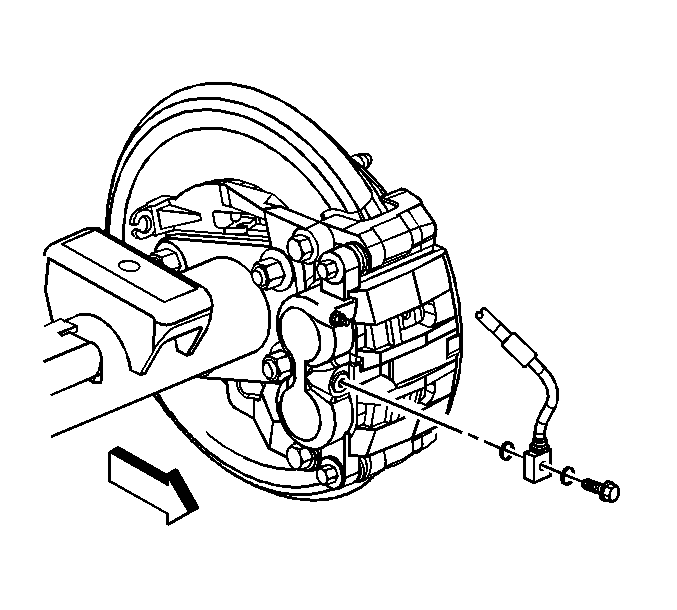
Important: Install a rubber cap or plug to the exposed brake pipe fitting end to prevent brake fluid loss and contamination.

Installation Procedure
- If you are installing new brake pads, use a C-clamp in order to compress the piston to the bottom of the caliper bore. Use the old brake pad, a metal plate or a wooden block across the face of the piston in order to protect the piston and the caliper boot.
- Ensure that the piston boot is below the level of the piston face.
- Install the caliper to the caliper mounting bracket.
- Perform the following procedure before installing the caliper guide pin bolts (15 Series pickups only).
- Install the caliper guide pin bolts.
- Tighten the caliper guide pin bolts.
- Remove the rubber cap or plug from the exposed brake hose fitting end.
- Assemble the 2 new copper brake hose gaskets and the brake hose to caliper bolt to the brake hose.
- Connect the brake hose at the caliper by installing the brake hose to caliper bolt.
- Bleed the hydraulic brake system. Refer to Hydraulic Brake System Bleeding in Hydraulic Brakes.
- Install the tire and wheel assembly. Refer to Tire and Wheel Removal and Installation in Tires and Wheels.
- Lower the vehicle.
- Fill the master cylinder reservoir to the proper level with clean brake fluid. Refer to Master Cylinder Reservoir Filling in Hydraulic Brakes.
Important: Use denatured alcohol to clean the outside surface of caliper boot before installing new brake pads.
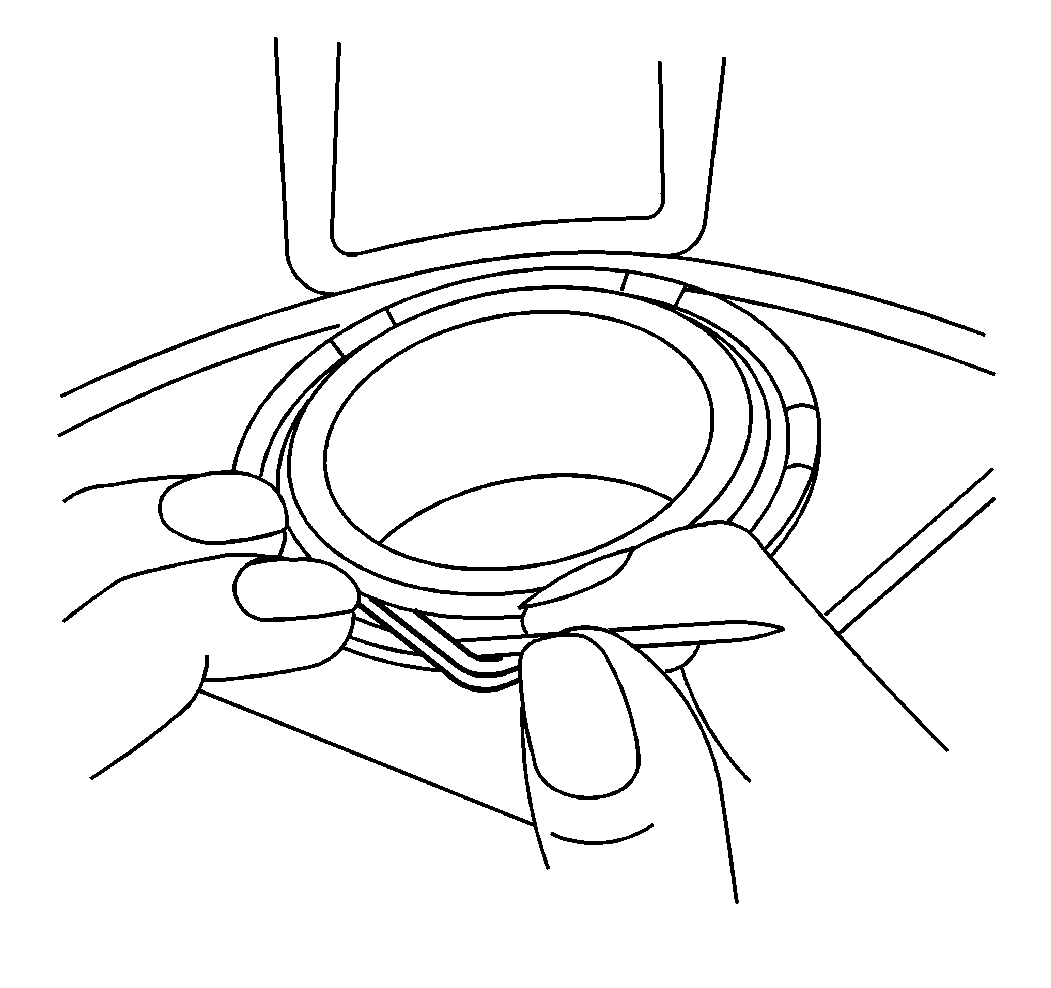
Important: Use a small flat-bladed tool and lift the inner edge caliper boot next to the piston to release any trapped air.
| 4.1. | Remove all traces of the original adhesive patch. |
| 4.2. | Clean the threads of the bolt with brake parts cleaner or the equivalent and allow to dry. |
| 4.3. | Apply Threadlocker GM P/N 12345493 (Canadian P/N 10953488) to the threads of the bolt. |

Notice: Refer to Fastener Notice in the Preface section.
Tighten
Tighten the caliper guide pin bolts to 42 N·m (31 lb ft).
Important: Install 2 new copper brake hose gaskets.

Tighten
Tighten the bolt to 40 N·m (30 lb ft).
Rear Brake Caliper Replacement 2500/3500 Series
Caution: Refer to Brake Dust Caution in the Preface section.
Caution: Refer to Brake Fluid Irritant Caution in the Preface section.
Removal Procedure
- Inspect the fluid level in the brake master cylinder reservoir.
- If the brake fluid level is midway between the maximum--full point and the minimum allowable level, no brake fluid needs to be removed from the reservoir before proceeding.
- If the brake fluid level is higher than midway between the maximum-full point and the minimum allowable level, remove brake fluid to the midway point before proceeding.
- Raise and support the vehicle. Refer to Lifting and Jacking the Vehicle in General Information.
- Remove the tire and wheel assembly. Refer to Tire and Wheel Removal and Installation in Tires and Wheels.
- Inspect the caliper operation. Refer to Brake Caliper Inspection .
- Install a C-clamp over the body of the brake caliper, with the C-clamp ends against the rear of the caliper body and the outboard disc brake pad.
- Slowly tighten the C-clamp until the pistons are pushed into the caliper bores enough to remove the caliper from the pads.
- Remove the C-clamp from the caliper.
- Clean all dirt and foreign material from the brake hose end.
- Remove the brake hose to caliper bolt from the brake caliper.
- Remove the brake hose from the caliper.
- Remove and discard the 2 copper brake hose gaskets. These gaskets may be stuck to the brake caliper housing or the brake hose end.
- Loosen the brake caliper mounting bolts. Do not remove.
- Remove the brake caliper mounting bracket bolts.
- Remove the brake caliper and the brake caliper mounting bracket as an assembly.
- Remove the brake caliper mounting bolts.
- Remove the brake caliper from the brake caliper mounting bracket.
- Inspect the caliper assembly. Refer to Brake Caliper Inspection .
- Remove the brake pads from the brake caliper mounting bracket.
- Remove the anti-rattle clips from the brake caliper mounting bracket.
- Inspect the brake caliper mounting bracket for cracks and/or damage. Replace if necessary.
- Inspect the brake caliper mounting bracket bushings for damage and/or wear. Replace the bushings if necessary.
- Perform the following procedure to replace the brake caliper mounting bracket bushings.


Important: Install a rubber cap or plug to the exposed brake pipe fitting end to prevent brake fluid loss and contamination.
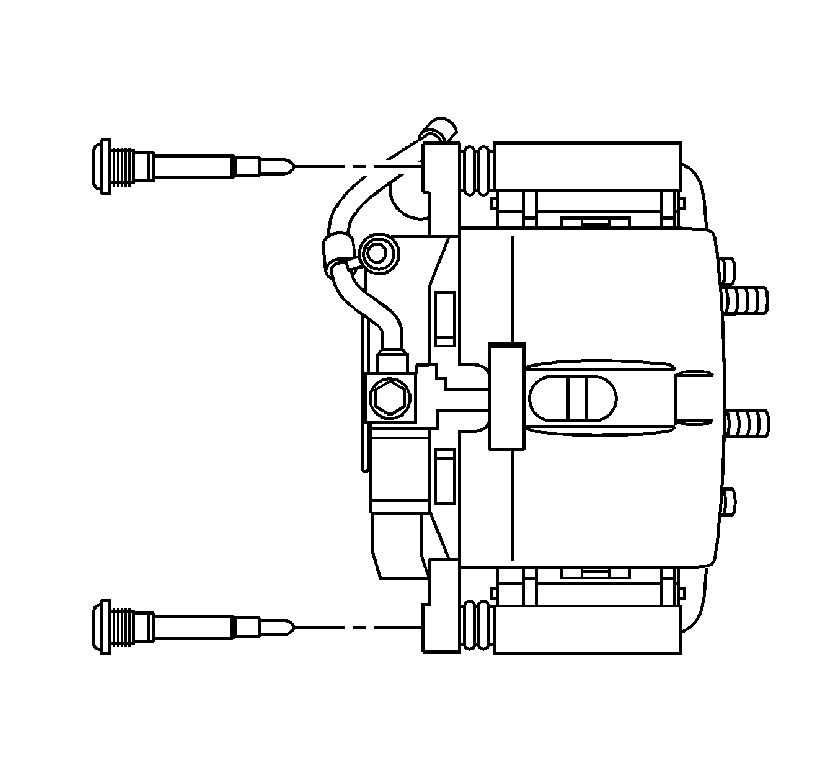
Caution: Do not depress the brake pedal with the brake rotors/calipers and/or the brake drums removed. Damage to the brake system may result. If brake system damage occurs and is not repaired, vehicle damage and/or personal injury or death may result.
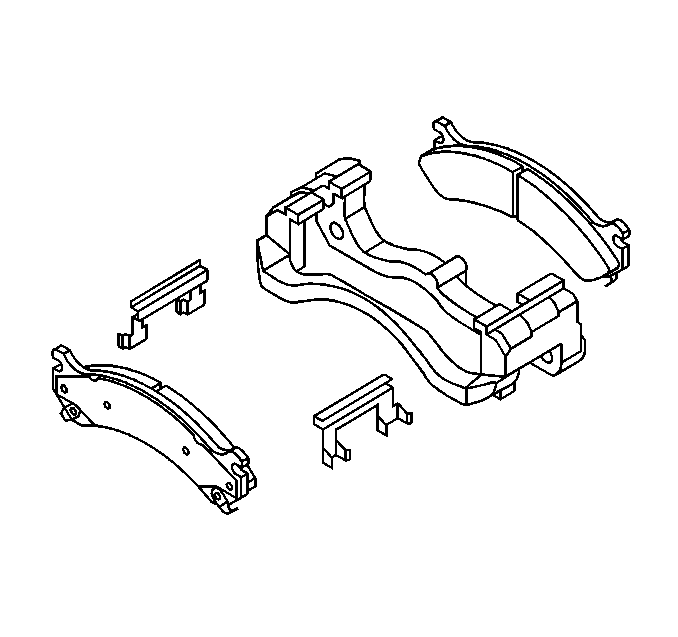
| • | Insert a flat bladed tool between the bushing flange and the mounting bracket. |
| • | Work the tool around the bushing flange and remove the bushing from the mounting bracket. |
| • | Place a socket over the boot onto the bushing flange and install the bushing to the mounting bracket. |
Installation Procedure
- Install the anti-rattle clips to the brake caliper mounting bracket.
- Install the brake pads to the brake caliper mounting bracket.
- Install the brake caliper to the brake caliper mounting bracket.
- Perform the following procedure before installing the brake caliper mounting bracket bolts and the brake caliper mounting bolts:
- Install the brake caliper mounting bolts. Do not tighten.
- Install the brake caliper mounting bracket and brake caliper as an assembly.
- Install the brake caliper mounting bracket bolts.
- Tighten the brake caliper mounting bolts.
- Remove the rubber cap or plug from the exposed brake hose fitting end.
- Assemble the 2 new copper brake hose gaskets and the brake hose inlet fitting bolt to the brake hose.
- Connect the brake hose at the caliper by installing the brake hose to caliper bolt.
- Bleed the hydraulic brake system. Refer to Hydraulic Brake System Bleeding in Hydraulic Brakes.
- Install the tire and wheel assembly. Refer to Tire and Wheel Removal and Installation in Tires and Wheels.
- Lower the vehicle.
- Fill the master cylinder reservoir to the proper level with clean brake fluid. Refer to Master Cylinder Reservoir Filling in Hydraulic Brakes.

| 4.1. | Remove all traces of the original adhesive patch. |
| 4.2. | Clean the threads of the bolt with brake parts cleaner or the equivalent and allow to dry. |
| 4.3. | Apply Threadlocker GM P/N 12345493 (Canadian P/N 10953488) to the threads of the bolt. |

Notice: Use the correct fastener in the correct location. Replacement fasteners must be the correct part number for that application. Fasteners requiring replacement or fasteners requiring the use of thread locking compound or sealant are identified in the service procedure. Do not use paints, lubricants, or corrosion inhibitors on fasteners or fastener joint surfaces unless specified. These coatings affect fastener torque and joint clamping force and may damage the fastener. Use the correct tightening sequence and specifications when installing fasteners in order to avoid damage to parts and systems.
Tighten
Tighten the brake caliper mounting bracket bolts to 300 N·m (221 lb ft).
Tighten
Tighten the brake caliper mounting bolts to 108 N·m (80 lb ft).

Important: Install 2 new copper brake hose gaskets.
Tighten
Tighten the bolt to 40 N·m (30 lb ft).
